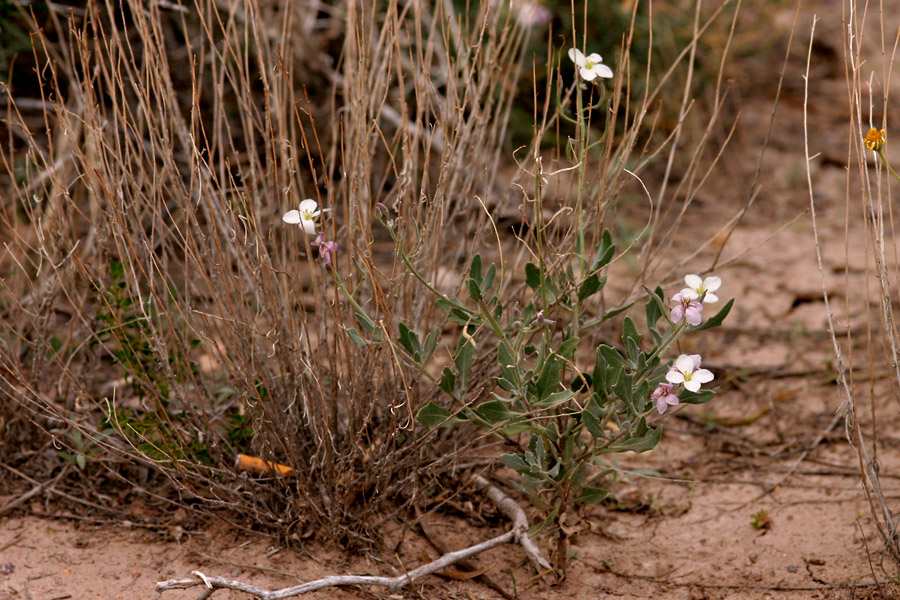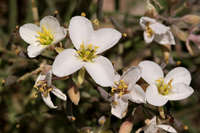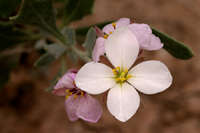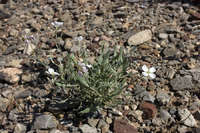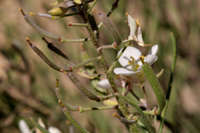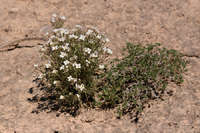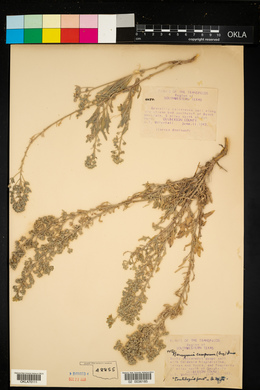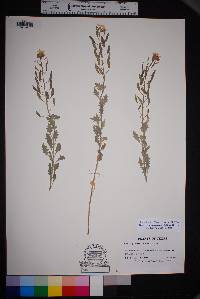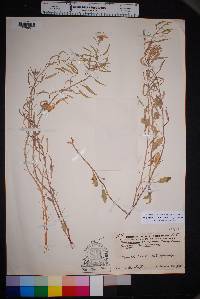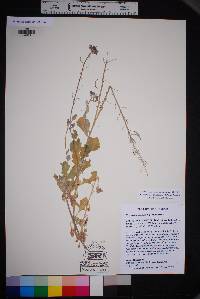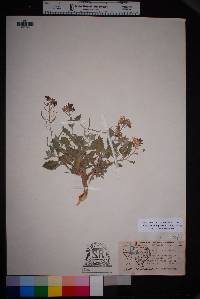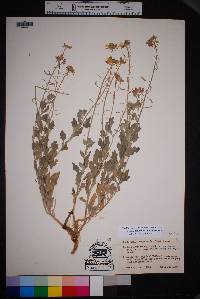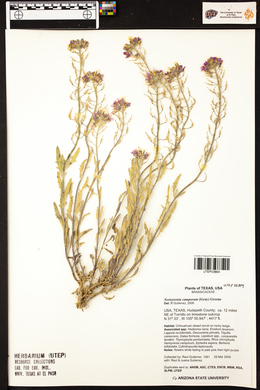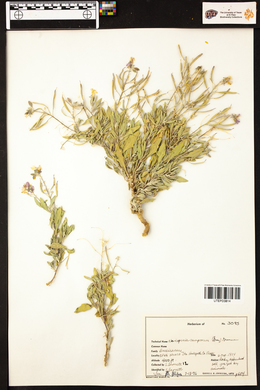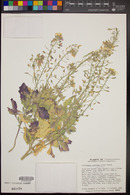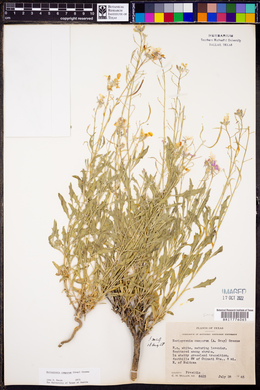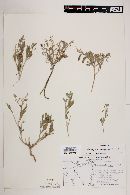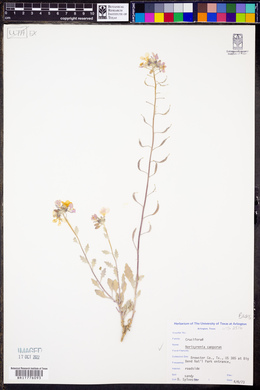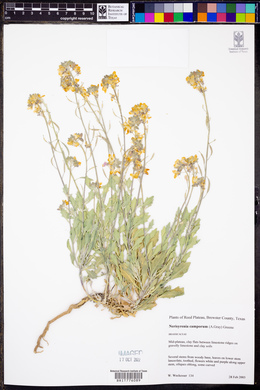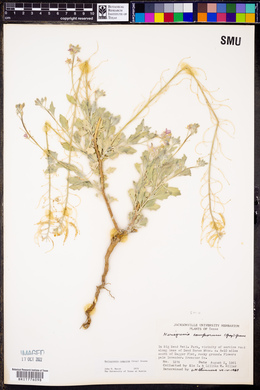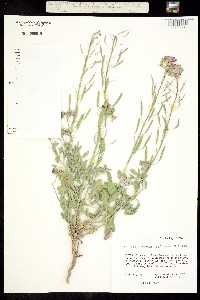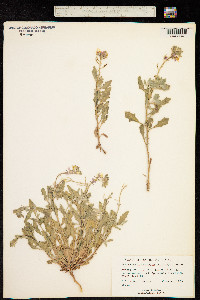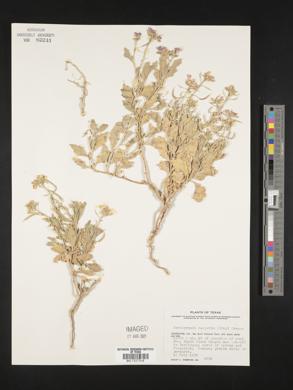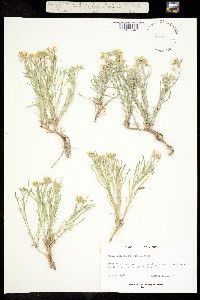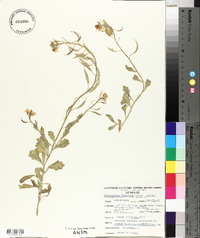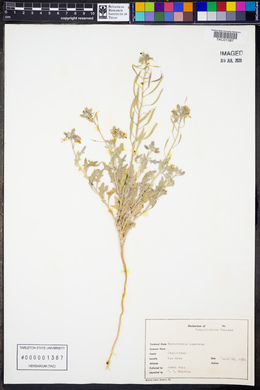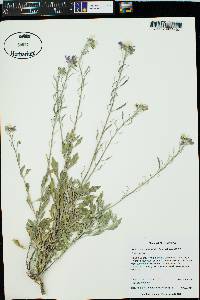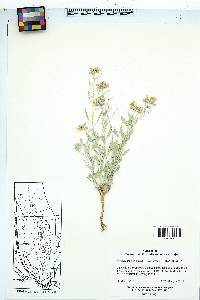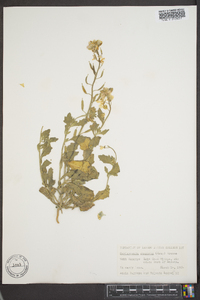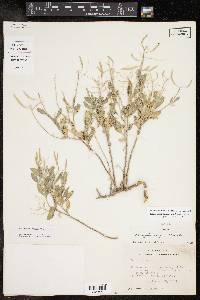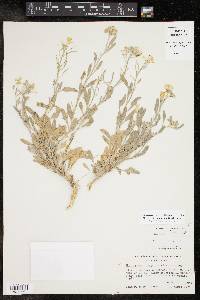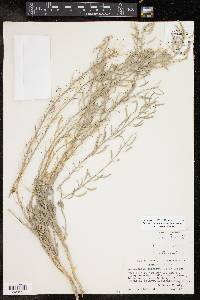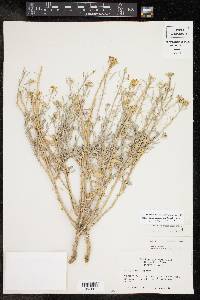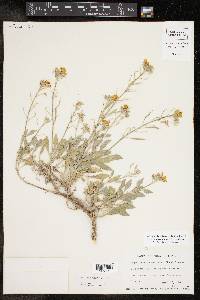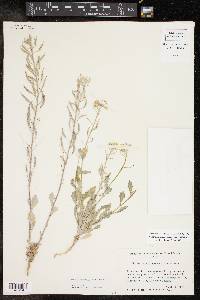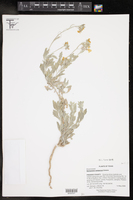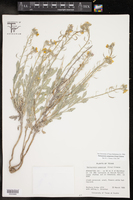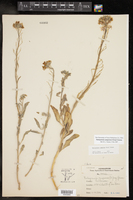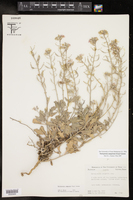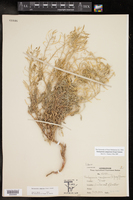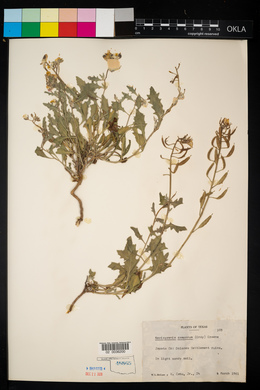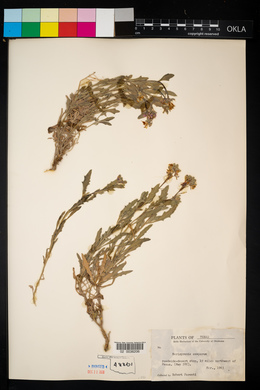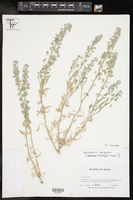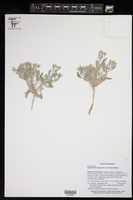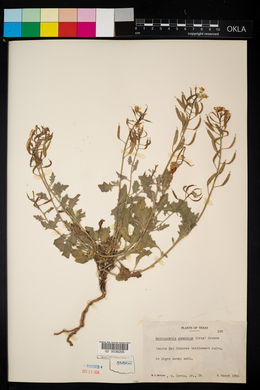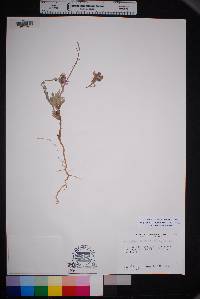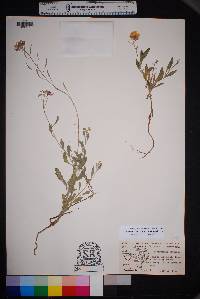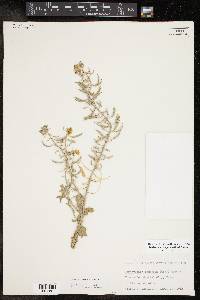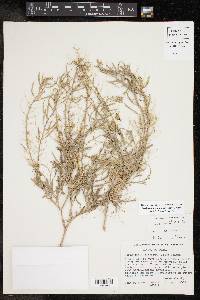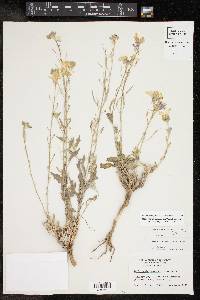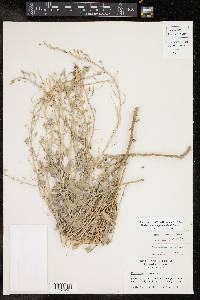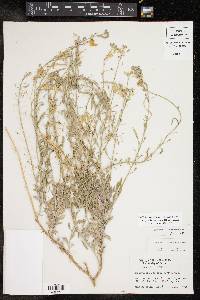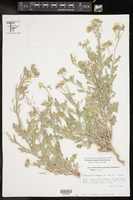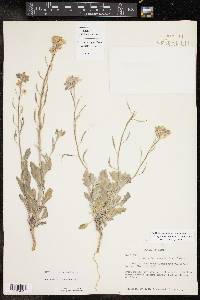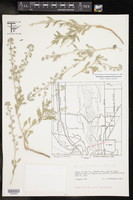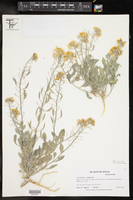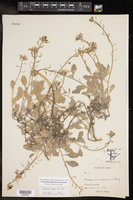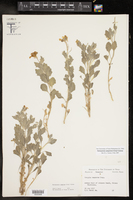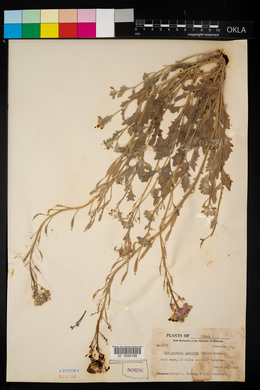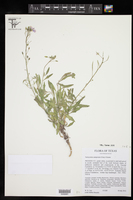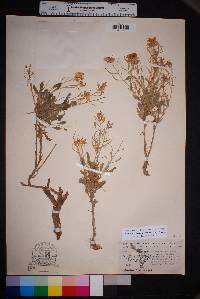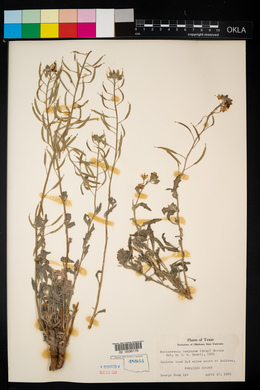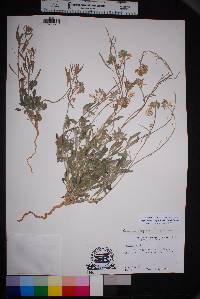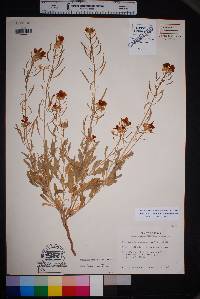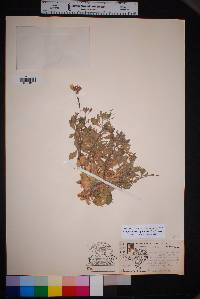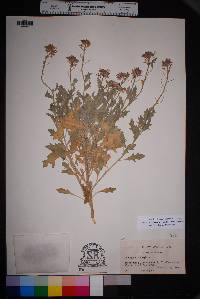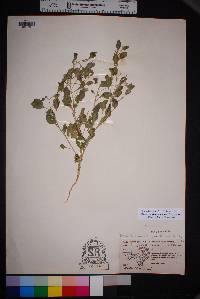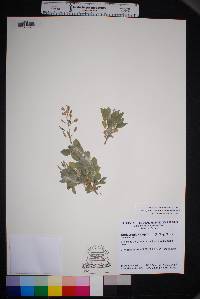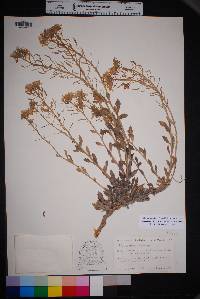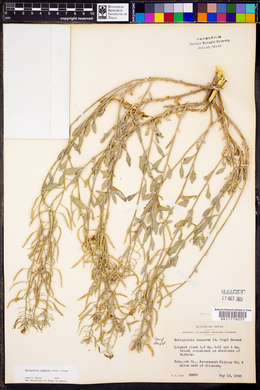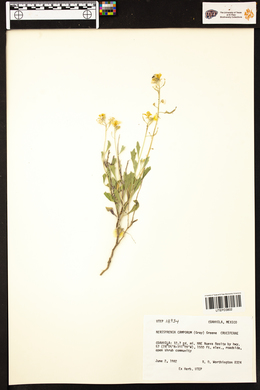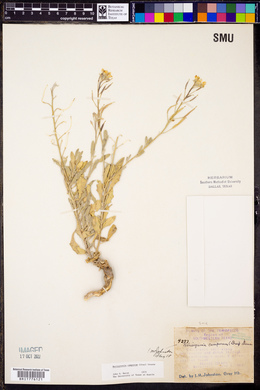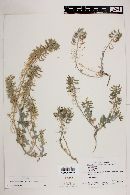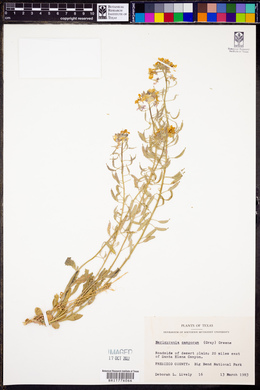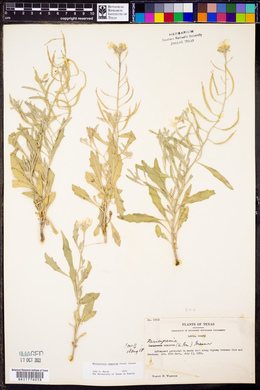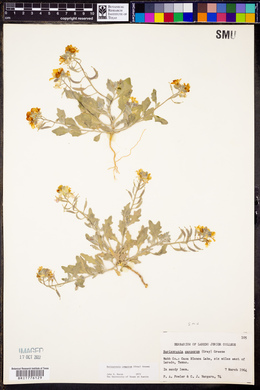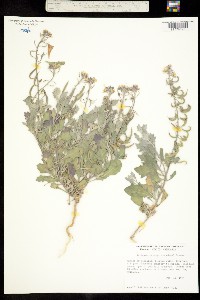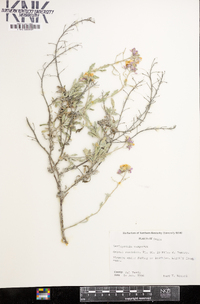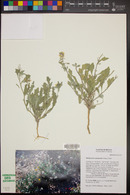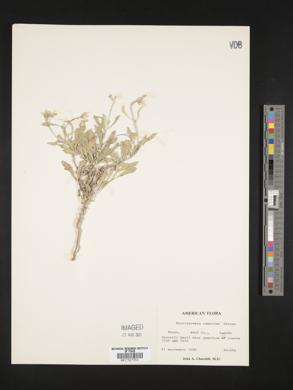
|
|
|
|
Family: Brassicaceae
Bicolored Fan-Mustard
[Greggia camporum A.Gray] |
Plants with woody caudex; moderately to densely pubescent or glabrate. Stems 1-6 dm, woody proximally, pubescent or glabrate with age. Cauline leaves: petiole 0.3-1.5 cm, often not sharply differentiated from blade, or (distal) sessile; blade usually obovate to spatulate or oblanceolate, rarely elliptic, 1-4(-4.5) cm × (4-)7-20(-30) mm (not fleshy), base attenuate, margins dentate, repand, or entire, apex acute to obtuse. Racemes 3.5 dm. Fruiting pedicels (rarely recurved), (7-)10-20 mm, densely pubescent. Flowers: sepals (spreading) oblong to oblong-lanceolate, 5-9 × 1-2 mm; petals obovate, (8-)10-14(-15) × 5-9 mm, claw (often flattened, margin dentate) to 2 mm; filaments 4.5-7.5 mm; anthers 2-3.5 mm. Fruits angustiseptate, 1.5-3 (-4) cm × 1.5-3(-4) mm; ovules 40-100 per ovary; style (1.5-)2-3.8(-4.3) mm. Seeds 0.8-1.1 × 0.5-0.7 mm. 2n = 18, 19, 21, 22, 27, 32, 34, 36, 40, 41, 58. Flowering year-round, mostly Feb-Sep. Clay flats, gypseous clay, gravelly knolls, hillsides, sandy washes; 200-1300 m; N.Mex., Tex.; Mexico (Chihuahua, Coahuila, Durango, Nuevo León, Tamaulipas, Zacatecas). FNA 2010, Correll and Johnston 1970, Allred and Ivey 2012 Duration: Perennial Nativity: Native Lifeform: Forb/Herb, Subshrub General: Perennial herb to subshrub, 10-60 cm tall, from a branching woody caudex; stems woody near the base in older individuals, erect or ascending, branching above the base; herbage densely and finely whitish-pubescent with branching (dendritic) hairs, becoming glabrate with age. Leaves: Leaves alternate along the stems, tapering at the base into petioles 3-15 mm long; blades obovate to oblanceolate, 1-4 cm long, 4-30 mm wide, the margins wavy, toothed, or entire. Flowers: Showy and white to lavender, in terminal racemes up to 35 cm long, which are congested in flower and elongate in fruit; pedicels densely pubescent, 1-2 cm long, ascending in flower and ascending to spreading when in fruit, or rarely recurved; sepals 4, spreading, 5-9 mm long; petals 4 in a cross formation, obovate, 8-15 cm long and 5-9 mm wide, white and fading lavender. Fruits: Capsules linear-oblong with obtuse bases and tips, 1-3 cm long and 2-3 mm wide, straight or slightly curved, dorsally compressed (so that the septum is visible running along the center of both flattened sides), densely whitish pubescent, topped with a per Ecology: Found on limestone knolls and hills, clay flats, gypseous clay, and in gravelly and sandy soils on plains and in washes, below 4,500 ft (1372 m); flowers year-round, but mostly February to September. Distribution: NM and TX; south to ne MEX Notes: If seen while in flower, this attractive perennial mustard can be easily recognized by its showy, 4-petaled white flowers which fade to an attractive lavender as they begin to dry out. The leaves and stems are covered with a fine layer of branched hairs, which gives the plant a whitish tint, although older plants may be less hairy. It has oblong, toothed leaves and the seed pods are about 2 cm long and slightly flattened on the longitudinal axis. Look for it in limestone, gypsum, and clay soils. Distinguish from N. linearifolia by the leaf width (5-20 mm in N. camporum and only 1-3 mm in N. linearifolia). Also, N. linearifolia is pubescent but the hairs do not give it a whitish or grayish cast as in this species. Ethnobotany: Unknown Etymology: Nerisyrenia comes from the Greek neros, flowing, and Syrenia, a genus of mustards from eastern Europe and central Asia, presumably alluding to a resemblance; camporum means growing on the plains. Editor: AHazelton 2017 |
|
|
|
This project was made possible in part by the Institute of Museum and Library Services [MG-70-19-0057-19].
Powered by Symbiota

